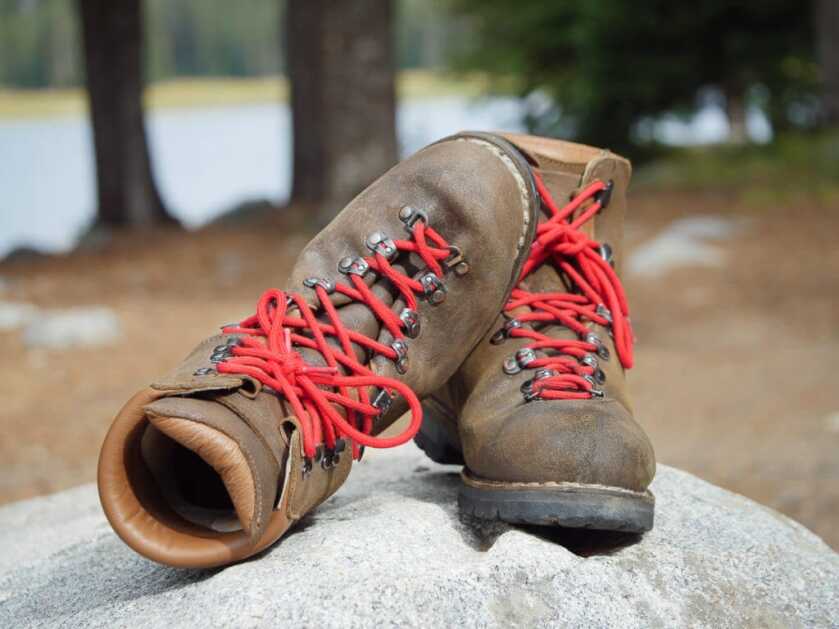
When you’ve finally found a pair of boots that treats your feet well, you should take as good care of them as they do of you.
Cleaning and waterproofing your boots will extend their life and extend your hunting enjoyment.
Nah, I’m good — my boots are waterproof
It’s hard to find a pair of boots that’s not “waterproof” these days. Unfortunately, that waterproof rating comes with a big asterisk.
Gore-Tex or whatever other brand of waterproofing is fabric lining the inside of your boots, it has small pores that allow water vapor from your hot foot to pass through outward while blocking liquid water from entering. It’s like a sock that is glued to the inside of your boot.
The trouble is that if the pores in the fabric are blocked, then they can’t let your sweat pass through, which makes your foot wet with sweat. When your boots are wet on the outside it blocks your boot from breathing. This is called getting “wetted out,” and it happens to jackets, too.
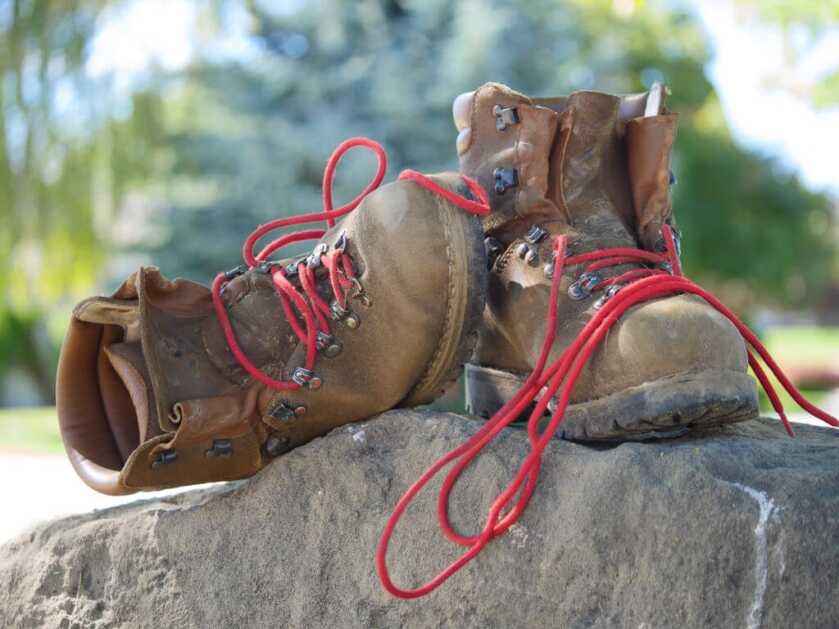
That’s why the leather on your boots was treated when you first got them and water just beaded up and ran off. That allowed the Gore-Tex to transpire and let some of the sweat off your feet.
Dry feet are warm feet
It’s too bad that the waterproofing on the leather and nylon outside your boot wears off so quickly. This is the waterproofing that you need to renew to keep your feet dry.
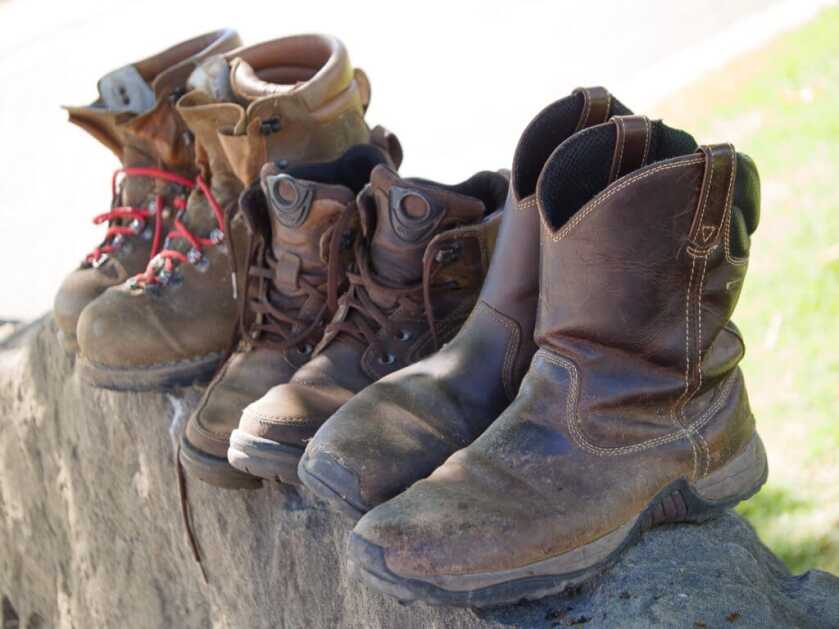
I like to buy boots that don’t have Gore-Tex. I prefer leather boots that I can keep waterproofed myself. Leather is a semi-permeable membrane and does a great job of keeping feet dry when it’s cared for.
I also don’t buy insulated boots because I’m usually hiking in them and my feet are perspiring. As long as your boots can breathe and your feet are staying dry, then your feet stay warm.
Clean your boots
The first step in sprucing up your boots is to clean them. A nylon brush is helpful for getting dust and old seeds out of the crevices. If you need to, use a damp rag to clean off mud or white salt stains. If they’re really soiled, you might even need to use saddle soap. Remember to pivot the lace loops and scrub under there, too.
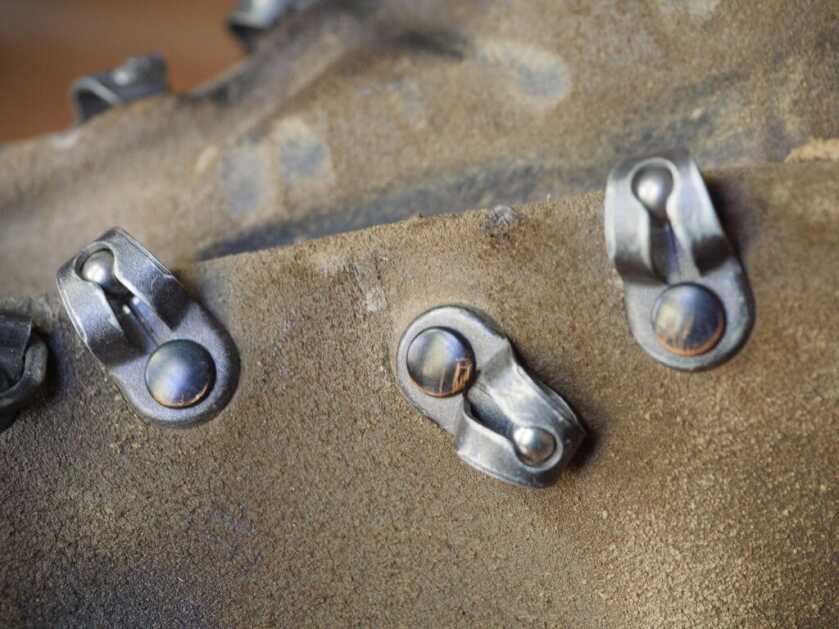
This might be a good time to sprinkle a little baking soda inside your boots to help with any odors.
Take off the laces and wash them in a bowl with warm soapy water. Do it over again until the water stays clean. Set them out to dry while you work on the leather.
Apply Obenauf’s
There are many good leather treatments out there. I’ve used Sno-Seal and all kinds of Nikwax. Right now I prefer Obenauf’s LP (leather preservative). It’s long-lasting and made in Idaho. I’d stay away from that old classic mink oil just because it softens the leather — boots are meant to be stiff.
If you have Kenetrek boots, I’ve heard that they require you to use their brand of waterproofing wax or it voids the warranty.
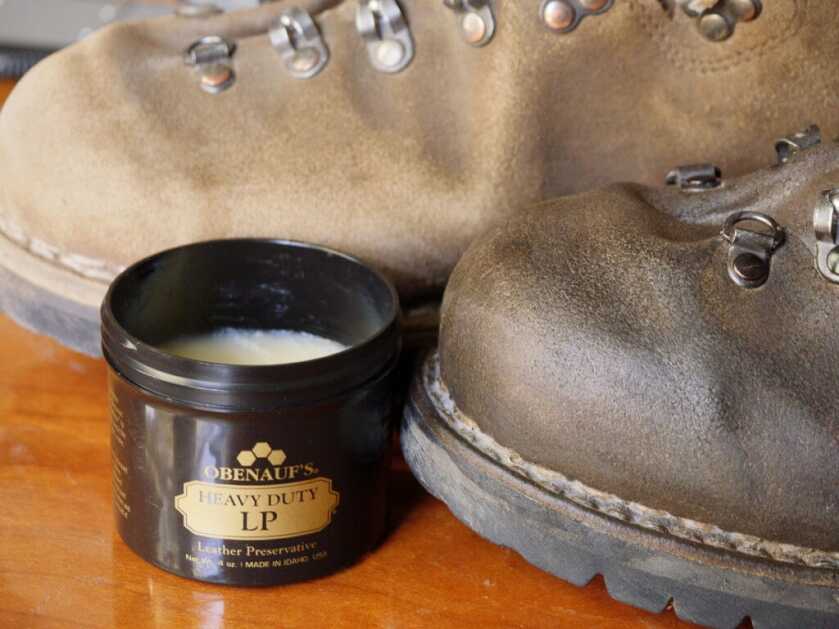
Using your fingers or a rag, apply the wax and rub it into the leather. Pay especial attention to the seams.
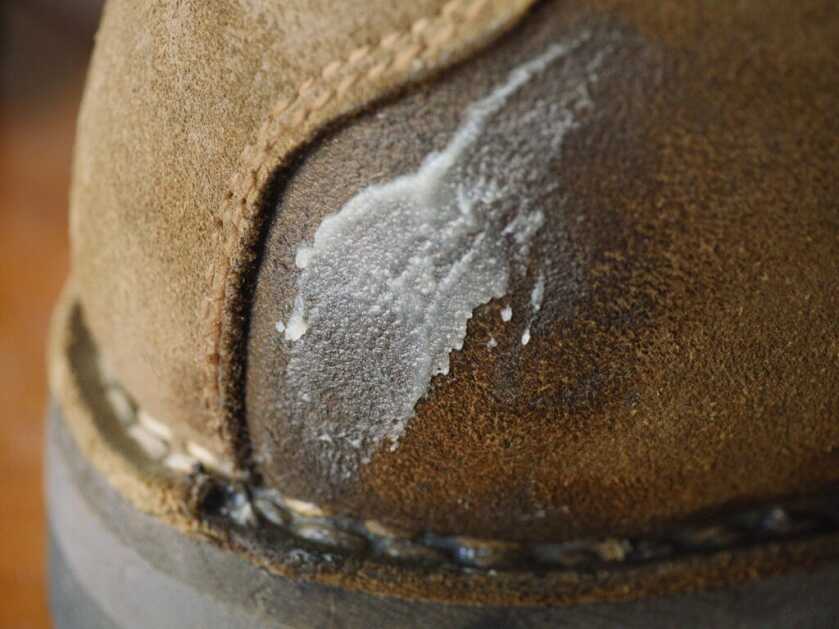
If your boots are suede, wax treatments will make them look like smooth leather instead. Suede will also take up a lot more wax on the first treatment, but it’ll be a strong armor for your feet.
Bake ’em
With a little heat, the wax will saturate into the leather. You could put your boots in a warm window sill or use a hairdryer, but the oven is a sure-fire way to get the wax melted in.
Turn your oven on to warm or the lowest temperature — something like 170 degrees or less — and let it warm for ten minutes or so. Then turn off the oven and put your boots on the rack. Note that if you have the oven too hot, it could melt the glue that holds the soles on.
If you put on too much wax, you may want to put a paper bag under the boots to catch any drips.
Leave your boots in the oven for a while. Maybe an hour. The important thing is to remove them before you turn on the oven to cook a roast.
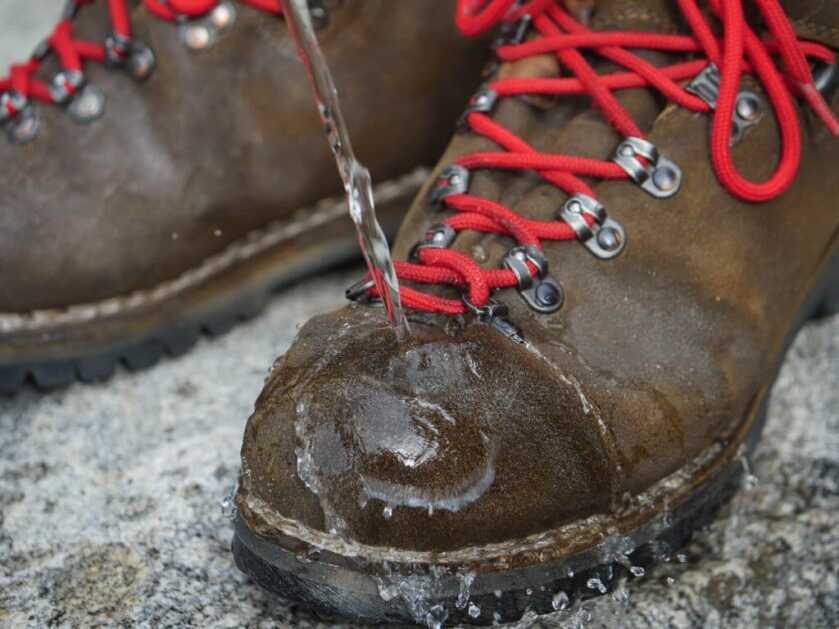
Lace ‘em and use ‘em
Your boots will now look and smell like new. They’ll repel water and keep you toasty for your winter hunts. Keep your leather healthy and your boots will last you a lot longer, which will leave you some extra cash for more tags.

Sitting on the porch on an early Fall evening, applying wax to your boots makes it feel like hunting season is about to start. Good luck this fall!


The first excellent pair of boots I ever had were given to me when I was 9 yrs old. Leather boots made by Chippawa. I wore those boots 3 years and they were the first pair of shoes/boots that I actually outgrew before I could wear them out. Fast forward 12 years, and my dad bought me a pair of Chippawa hunting boots – all leather, but insulated, while I was visiting home from my Air Force tour of duty overseas. I am now 55 and still own those boots. But being insulated, I only wear them during winter.
I now have a pair of Thoroughgoods that are nothing but leather…. with all the gortex and other stuff out there, it’s becoming hard to find all-leather boots. First thing I did was slather a thick layer of mink oil and heat ‘em up for a while. Used up almost the whole can! Despite all that grease, my feet breath easy. No, they’re not 100% waterproof, but they are the perfect boots for me. My feet get hot in gortex, and I have never liked anything on my feet other than leather. But I do love my leather boots; in many ways they are more comfortable than sneakers.
I use regular wax bowl ring that can be found in any plumbing supply store. Take your time applying wax and give it a hairdrier treatment afterwards – worked wonders every time.
Good stuff… BIg fan of Obenauf’s for leather which is processed with oils and waxes. Not all boots are- if they are tanned with silicone, use a silicone based treatment.
I have used all manner of “waterproofing” for my boots, including the vaunted SnoSeal and others. Hear me well:
You cannot waterproof leather, Period!
I was upland hunting through fields with moderately high grass, which was soaked with morning dew. After about fifteen minutes out, I could feel my socks were wet in spots. Those particular boots had been drenched in SnoSeal.
My experience with that brand, and others, has told me that All these lotions & potions are only good at repelling light and occasional contact with water. Anything more and they Will fail.
If you need waterproof footwear, go with rubber boots. Even Gore-Tex has distinct limitations; it also wears-out.
Your experience is not unique. I find that paying especial attention to the seams is key to keeping the most wetness out. Gore-Tex and other similar membranes certainly have their limitations. Rubber boots are truly the only to keep water out, but they’re also very good at keeping water in. Many newer rubber boots have linings that are good at transpiring sweat out the top of the boot. I have a pair of DryShod boots that are phenomenal — I backpacked several miles through the snow on steep terrain and was comfortable for two days.
How about using silicon spray? I spray all my caps and all my shoes including hiking or regular shoes and boots. I then coat my leather shoes with mink oil. The mink oil also makes them have a nice shine.
I was always concerned that a too coating would not allow my feet to breath, thanks for the clarification.
I also use silicone spray on my clothing — again, I like Obenauf’s. Leather is a naturally breathable material, and the coating does affect its breathability, but if you’re going to be in anything wet it’s better to have it coated. Using wool socks that extend above the top of your boot will help the sweat from your feet evaporate out the top of the sock as the sweat is wicked upward in the cuff.
Your comment about wool wicking moisture is false. Wool is a hollow fiber and does not wick. Experiment to prove the point. Take a wool sock and cotton sock and tie them suspended from a chair so that both are in the water a couple inches. Inspect after several hours. You will find the cotton sock wet to the top, “wicking moisture.” The wool sock will be dry a little above the water line. Cotton is a solid fiber.
My experience of 5 decades of high altitude mountaineering, Gore-Tex is still my first choice. Bill Gore introduced me to it in the mid 70’s. If you’re going to talk about dry feet you must understand heat vapor transfer at various points of the body. Feet in this case. And we all transfer differently. Way more technical than what is allowed for here in a short response. But wool is hollow and does not wick.